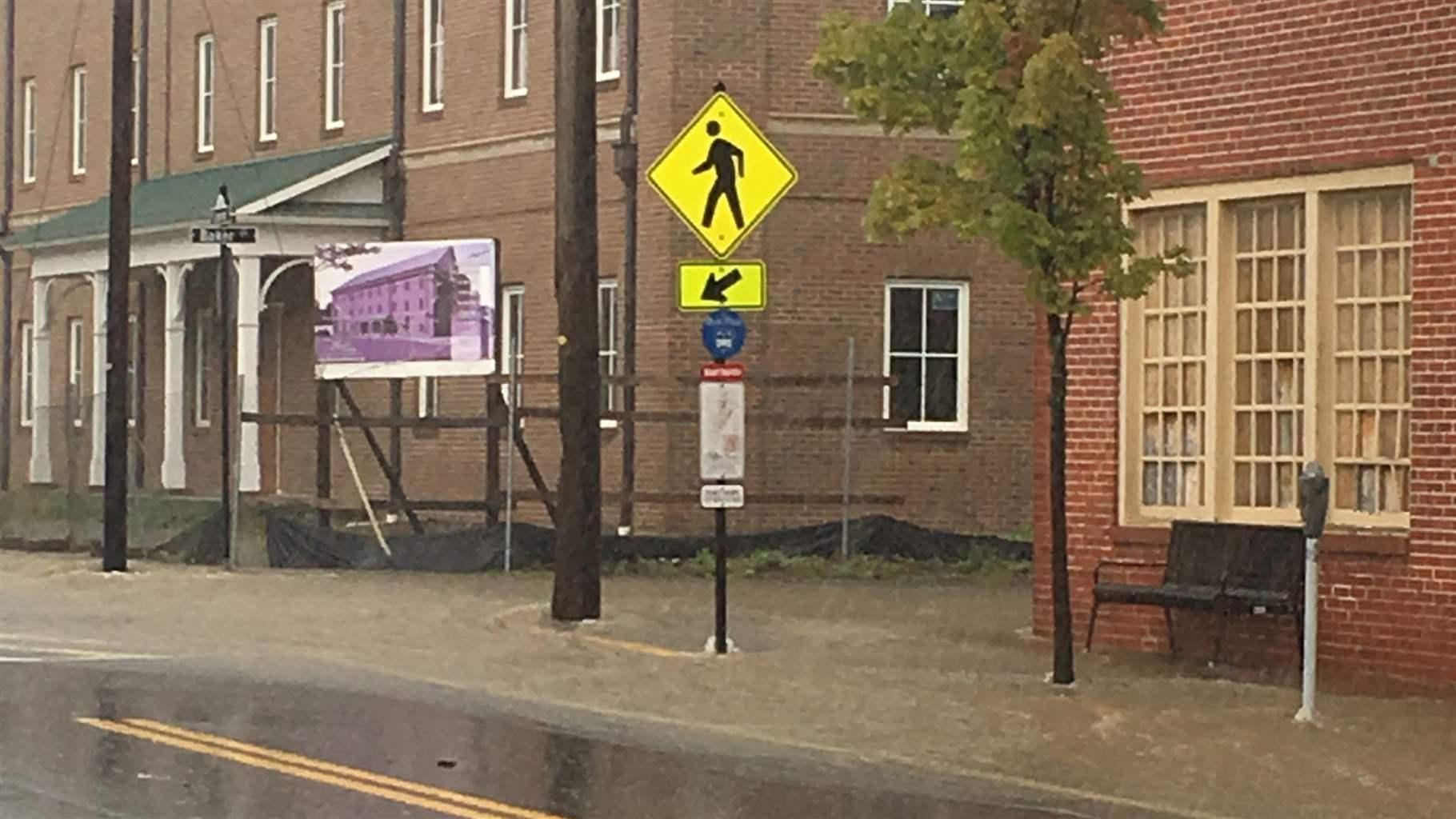Clarkson: Funding for community flood preparedness critical for Virginia’s future
The residents of Chesapeake, Norfolk, Virginia Beach, and other coastal communities suffer significant flooding from rising tides, rainstorms, and, of course, hurricanes on a regular basis.
Much has been made of these issues with sea level rise and coastal flooding. Virginia Beach has already spent millions of taxpayer dollars on plans to save communities. The price tag for relief and mitigation will undoubtedly reach the billions.
But flooding from increasingly severe storms isn’t just an issue in coastal areas. The problems extend to inland communities throughout the commonwealth. Just ask some of the residents of the town of Hurley in Buchanan County who saw their entire lives washed into the river last summer as heavy rains fell from an isolated, stalled out storm. Mudslides and rising waters took every possession that many of the residents had, and unfortunately one woman lost her life.
There’s the adage that possessions can be replaced, but that falls on deaf ears for the residents of Hurley, most of whom couldn’t afford flood insurance even if they could get it. As of right now, there is no mechanism to replace what was lost.
There’s the adage that possessions can be replaced, but that falls on deaf ears for the residents of Hurley, most of whom couldn’t afford flood insurance even if they could get it. As of right now, there is no mechanism to replace what was lost.
I am sorry, what? Tell that to the owners of more than 100 homes which were lost or severely damaged. Tell that to the relatives of the woman who lost her life.
Situations like this shed more light on the fact that individual communities and states will need to find a way to provide relief for places like Hurley and the coastal areas as well as being more diligent in preparing for the increased flooding that is undoubtedly coming in the future.
Fortunately, Virginia has a mechanism in place to help communities from the coast to the far southwest reaches of the state prepare for future flooding events.
The Community Flood Preparedness Fund (CFPF) was established by the Virginia General Assembly in 2020. Monies in the fund are exclusively dedicated to enhancing flood prevention and protection across the commonwealth.
Currently the CFPF is funded from a portion of the proceeds generated from Virginia’s membership in the Regional Greenhouse Gas Initiative (RGGI).
To date, Virginia’s participation in RGGI has generated more than $100 million for the CFPF in the last year alone. More than $32 million of those monies have been awarded in the first two grant rounds, with another $40 million earmarked for the next grant round in April. The balance has been designated for regional watershed flood resiliency plans to be completed by the state.https://05fbb4c55e2435cbda3a4e8c1637a3fd.safeframe.googlesyndication.com/safeframe/1-0-38/html/container.html
So far awards have gone to projects and planning from the city of Alexandria, to the Northern Neck, to Virginia Beach, to Charlottesville and all the way out to the furthest reaches of Southwest Virginia in Buchanan County, illustrating the need for flood resiliency is not just a coastal issue.
Gov. Glenn Youngkin has made clear his desire to pull Virginia from RGGI.
Pulling out of RGGI is about politics. Watching your life being washed away in a torrent of muddy water is not a political event. It’s a disaster.
Regardless of Virginia’s future in regards to RGGI, it is imperative that Virginia continue to fund the CFPF.
If Youngkin is intent on pulling out of RGGI and sacrificing the funds generated annually for flood preparation, he should have a rock-solid plan to sustainably fund the CFPF from somewhere else going forward. So far, one has not been introduced. Failure to do this will be its own disaster and will cost communities from southwest Virginia all the way to the coast hundreds of millions of dollars over the next handful of years for flood preparation.
Tee Clarkson works for First Earth/2030, helping private and public clients manage eco-assets. They are currently working with public entities around the state to prepare flood resiliency plans and implement projects using CFPF funding.
home page